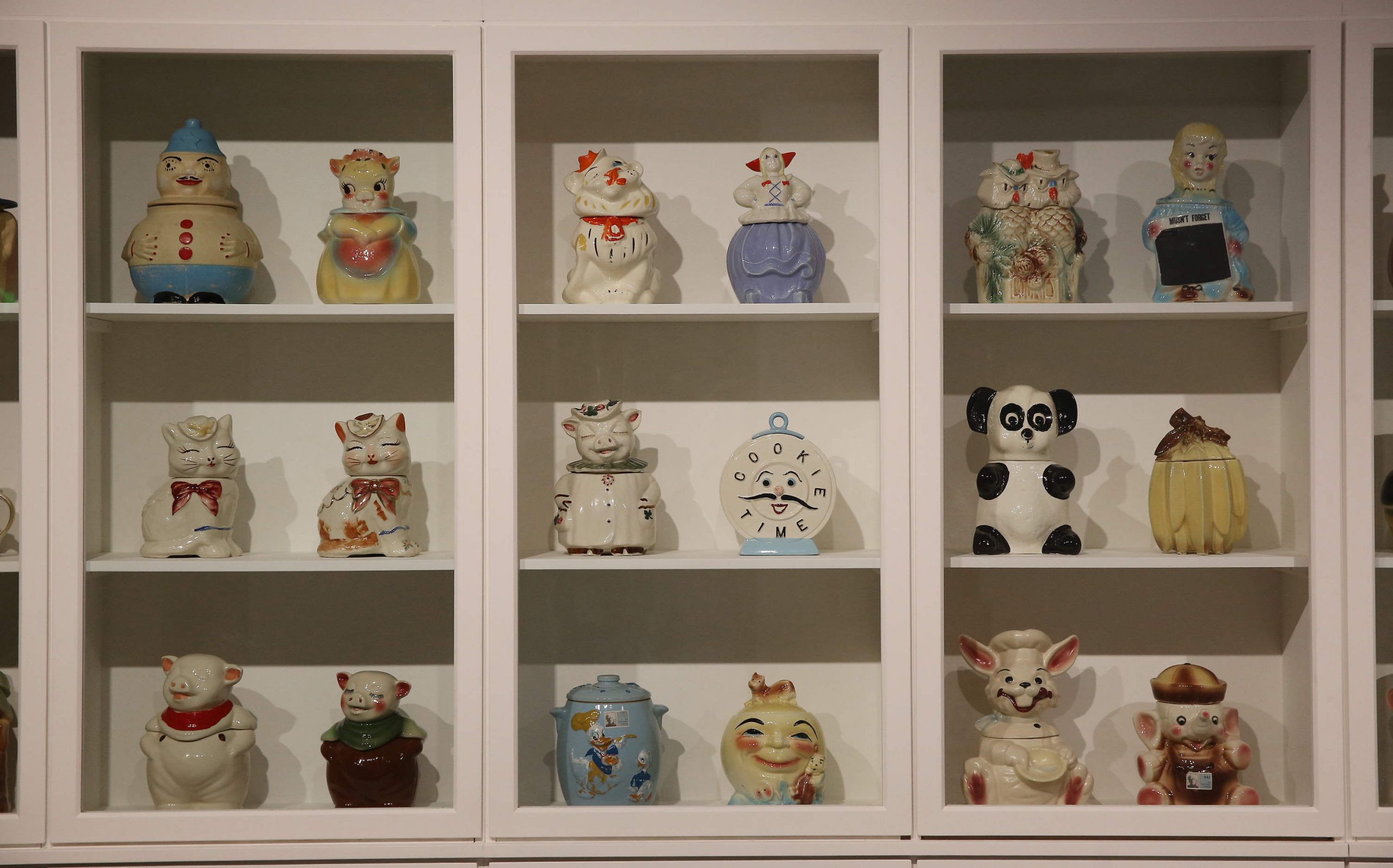
What is it that brings together a lamb with seven legs, a book on Ronald Reagan and the world’s most inspiring tea towel collection? It sounds like the set-up for a particularly obscure round of Only Connect, but the Barbican’s new Magnificent Obsessions: The Artist puts all of these objects in compelling – if unusual – conversation.
Opening today, the exhibition shows the private creative process behind some of the twentieth century’s most renowned art. Sometimes the connections are evident: a room of Damien Hirst’s taxidermy, for instance, melds seamlessly with his 2012 Last Kingdom, the mirrored wall of insects which brings to mind the Natural History Museum as it might appear in an MIA video. Similarly, Andy Warhol’s stack of Heinz and Campbell’s soup boxes almost seems too obvious an item to include – until you remember that, at the time of collection, he had not yet made their logos iconic.

Last Kingdom, 2012. © Damien Hirst and Science Ltd. All rights reserved, DACS 2014. Photographed by Prudence Cuming Associates Ltd.
At other points, the collections are more obscure. If you didn’t know it, it’d be hard to tell that Peter Blake’s hoard belongs to the mind behind one of the best-known acts of curation in pop culture, the sleeve of The Beatles’ Sgt. Pepper’s Lonely Hearts Club Band.
As curator Lydia Yee explains, the variety of the exhibition is all part of the balancing act. The goal, she tells me, wasn’t voyeurism, but to give visitors an insight into the creative process “in the way you might look at an artist’s sketchbook”.
For an exhibition set amongst the Barbican’s famous brutalist architecture, Magnificent Objects is surprisingly intimate – the result of careful planning by Yee. The exhibition shows the items “in a way that suggests their own environment, rather than the museum environment”. Thus the collection of Hanna Darboven, the German artist closely tied to the New York Minimal scene, is presented in a jumble of domestic and artistic ephemera. At the time of her death, there were 50,000 pieces in her house; looking at a cardboard cut-out of Charlie Chaplin crammed up against an electronic organ, one can almost picture it.
Part of Hanna Darboven’s collection at Magnificent Obsessions. Photo: Peter MacDiarmid/Getty Images
Darboven is just one the artists whose miscellany is notably outward-looking. Indeed, the most compelling features of the exhibition is the way it blurs the boundary between public and private; for all its intimacy, Magnificent Obsessions is also the story of the twentieth century as told through collecting. Arranging everyday objects, it shows us, can be a way of thinking through the culture of the moment. Martin Parr’s collection of postcards is an obvious example, with pictures from tilting chimneys to seaside cartoons reflecting the changing face of both industry and leisure in the 1970s. (Parr began collecting the postcards on a trip to Butlin’s, in what may be the first recorded example of something inspiring happening there.)
For Yee, this is a vital part of the exhibition. “It’s a balance. There’s the one-of-a-kind, the 50 million-year-old fossil or the Indian Mughal painting, but the twentieth century is marked by mass production, by reproduction.” In fact, Yee found a surprising duplicate while putting together the show: Andy Warhol and Martin Wong had two of the same cookie jars — a coincidence that allows one to pleasingly imagine the pair fighting over finds on the American flea market circuit.
These small connections and unlikely moments lend of a sense of excitement to an exhibition that could easily have fallen flat. There is a danger, in an age when artists like Tracey Emin have made revealing their private objects an artistic practice, that the titillation of seeing personal things will be dulled. It’s pleasing to discover that a glimpse behind the curtain can still be so thought-provoking – and so relatable. After all, as Head of Visual Arts Jane Alison puts it, “the thrill of collecting is something we can all relate to”.






